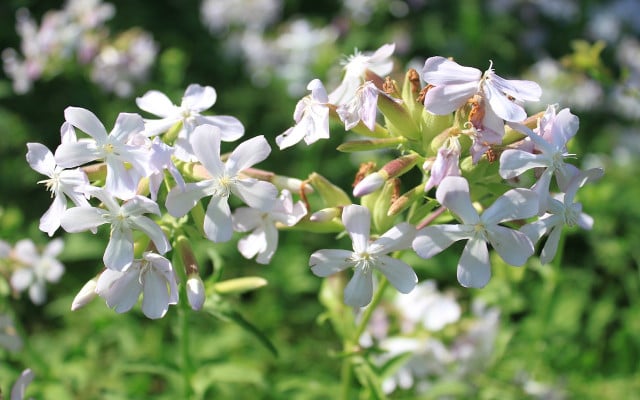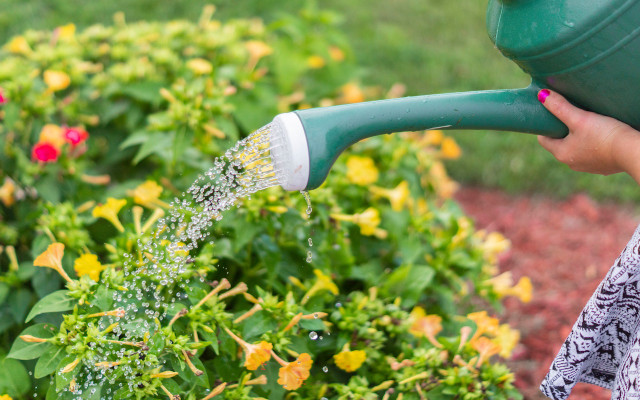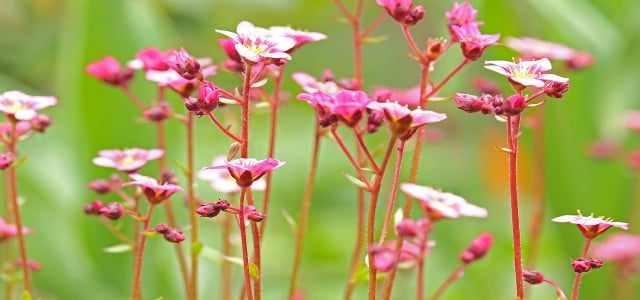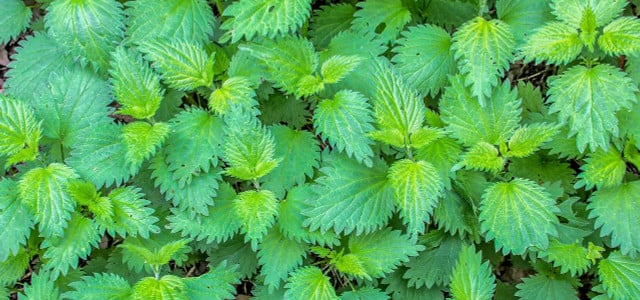Soapwort (Saponaria) is a flowering herb that gets its unique name from its ability to make soap. This garden perennial is not only pretty but extremely robust! When planted, cared for, and pruned properly, soapwort will reward you with beautiful pink and white flowers.
Sun-Loving Saponaria
Soapwort is a plant species from the carnation (Caryophyllaceae) family. It is also known as bouncing-bet, crow soap, wild sweet William, and soapweed. About 20 subspecies fall under the term soapwort, all known for being hardy, heat or sun-loving, and undemanding.
While the exact origins of the Saponaria plant are unknown, soapwort is now found in almost all of Europe, North America, and Central Asia. Today it is commonly found growing in domestic gardens or in flower pots on balconies due to its beautiful flower — and its ability to attract bees and butterflies.

Planting Soapwort
Soapwort owes its colloquial name to a special property: when you crush the roots and rub them together in a little water, the mixture foams like soap. This was indeed a method used in the past to hand wash clothing.
Nowadays, all parts of the plant can be used to create mild detergents due to their saponin content. When combined with hot water, Saponaria flowers, leaves, stems, and roots create a soap solution so delicate it is often used in museums to clean and restore sensitive fabrics and artwork.
Luckily, this wild perennial herb is very hardy — you don’t need to pay much attention to it if you want to plant soapwort in your garden!
Location & Soil
- Soapwort makes a great addition to empty flowerbeds, rock gardens, or forest edges.
- Saponaria grows well in full sun to light shade and will thrive in nearly any location that has well-draining soil.
- It is a plant that is best suited to Zones 5 to 7 but can handle the climates of Zones 3 through 9.
Planting Tips
- The best way to cultivate Saponaria is to plant the seeds, either directly in your garden soil or in large pots.
- Press the seeds lightly into the soil, but do not cover them.
- The plants should be spaced at least one foot apart, depending on the variety. This is a bushy herb that can spread quite quickly.
Spring is the ideal time to sow the seeds as they are cold germinators and need low temperatures for a certain time before they sprout. By planting in the spring, you have plenty of time to let your Saponaria plants establish before winter.
At the beginning of the growing season (usually mid-May), you can begin to fertilize your soapwort. We recommend you use organic fertilizer or homemade compost, like coffee grounds or onion skins.
Soapwort Care: Pruning and Overwintering
Saponaria is very easy to care for, requiring additional attention only in extreme temperatures. Once fully established, soapwort can adapt to longer dry periods. Therefore, you only need to water the perennials in your garden if heatwaves or dry conditions go on for a while.
If you have decided to plant your perennials in containers, you should water them at least two to three times a week, especially during the summer. The soil in pots dries out faster than the soil in the garden.



Pruning Soapwort
To prevent soapwort from overtaking your garden, and to ensure your plant comes back fuller next year, you should prune it after the flowering period at the end of October. To do this, cut off all withered flowers and seeds and cut them back to nearly half their size. During the fall months, the wind normally spreads the seeds.
Tip: Save some seeds for the coming spring or give them to friends and family!
Saponaria Hibernation
Common soapwort, like most of its close relatives, is hardy and can withstand sub-zero temperatures. Once established, these plants can easily tolerate temperatures as low as -5˚F in your garden without any extra winter protection.
Only potted plants need additional protection during the cold season, which you can provide by putting a thick layer of leaves or mulch on their root ball and wrapping the pot in burlap (available on Amazon**). If possible, place the pots off the ground, like on some wooden boards, to prevent the roots from being affected by ground frost.
Please Note: Soapwort is toxic to pets in high doses. If you have dogs or cats in your garden, either plant it out of reach or rethink planting this herb. Avoid planting Saponaria too close to a garden pond or other bodies of water. The toxins in the roots may damage the water and organisms living in it.
** Links to retailers marked with ** or underlined orange are partially partner links: If you buy here, you actively support Utopia.org, because we will receive a small part of the sales proceeds. More info.Do you like this post?







